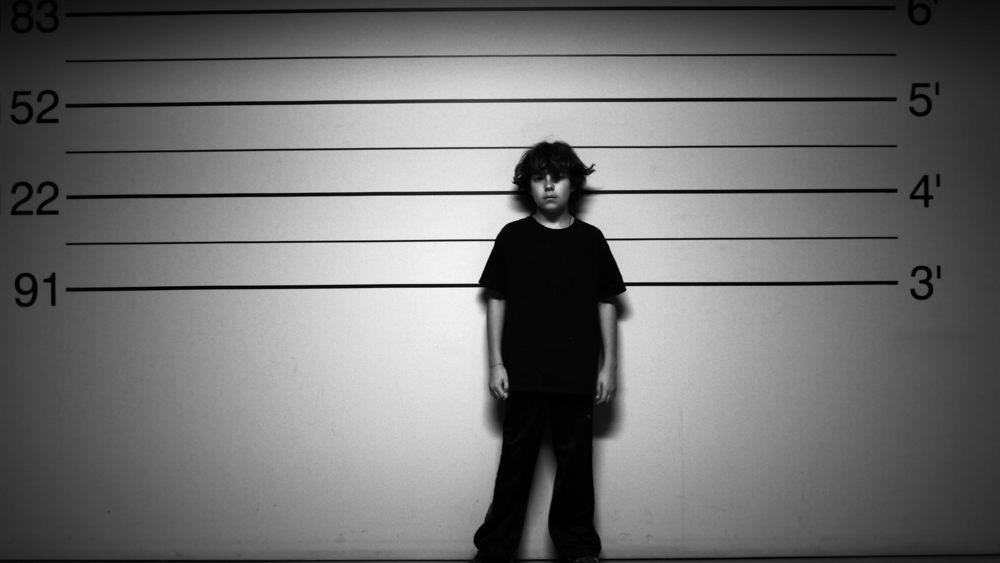While considerable progress has been made among law enforcement to treat young victims differently, too many police and prosecutors still fail to recognize that in the delinquency setting, young children do not perceive, process and experience the world as adults do and also need to be treated differently. Just as the medical profession has created pediatrics and adolescent medicine to address the unique needs of these age groups, law enforcement agencies need to train and guide law enforcement officials to handle cases with youth with the skills, resources and information necessary to avoid results leading to severe miscarriages of justice resulting in traumatic impacts.

Lisa Thurau
This was made clear by a recent decision by the Sixth Circuit Court of Appeals in B.R., et al. v. McGivern, et al.. In her concurring opinion, Judge Jane Branstetter Stranch wisely concluded, "This case presents an opportunity to consider alternate methods of addressing the problems that children, growing up in today's world, experience or cause. To the extent that these issues continue to be addressed in the criminal justice system, it is of unquestionable importance that law enforcement officers receive proper training and support in how to understand and interact with children — whether they are accusers or the accused — in a way that recognizes the unique needs and vulnerabilities of children."

Daniel Pollack
In this case, police and the prosecutor were sued by the parents of a preteen whose claims included malicious prosecution, false imprisonment, intentional infliction of emotional distress and failure to adequately train officers. The Sixth Circuit Court of Appeals affirmed the lower court’s ruling of summary judgment in favor of the defendants, including a police detective, the police department where he was employed and the prosecutor involved in the case.
B.R. faced rape charges based on accusations of three other preteen girls. The charges were dismissed with prejudice by the delinquency court, but only after B.R. had spent considerable time under house arrest and in detention. B.R. could have been spared much anxiety had law enforcement and prosecutors been trained to use developmentally appropriate, trauma-informed approaches to policing youth.
The court’s decision, while critical of the conduct of law enforcement officers and the agency’s failure to create train officers for such cases, tacitly condoned the continued absence of policies, practices and training for law enforcement and prosecutors involved in cases of children, preteens, teens and sexual behavior.
The result of these systemic deficiencies was, the court acknowledged, a “terrible tragedy.” But the court added insult to injury when it granted qualified immunity for the defendants, while finding the city was not liable for “regularly assign[ing] officers to investigate juvenile sexual misconduct without proper training.” The court’s decision compounded systemic shortcomings by sidestepping an opportunity to require law enforcement to conform with national standards of care and act to recognize that children must be treated with special skill to avoid violating their constitutional rights.
What law enforcement and prosecutors ignore
It is worth describing in some detail how the investigation proceeded in B.R.’s case to demonstrate how a “adultified” approach led to this adulterated result. The plaintiff, a 10-year-old, was charged with raping and sodomizing three somewhat older girls at sleepovers. The accusers were given a special interview by a child welfare worker; the accused was not. The accused child’s parents’ disclosures about how she had been repeatedly bullied, threatened by one of the accusers on Facebook (which the officers did not investigate), and that notwithstanding the claims of rape, all three accusers were planning to attend an upcoming sleepover at the accused’s home, did not stir the officers’ doubts.
In the majority opinion, the court asked: “Could the officers have been more thorough in their investigation? Without question. Could they have, for instance, asked more detailed questions [of the accusers] during the second interviews [where the girls began recanting]? Absolutely.”
In her concurring opinion, Stranch was even more critical of police procedures. Describing the investigation as “artificially rushed,” she noted that it was conducted by officers who were “seemingly unprepared to handle the complex task of investigating allegations of sexual assault made by and against children.” The probable cause determination leading to the arrest of the accused child was “the fruit of an investigation that was inappropriately hurried and lacked necessary grounding in how to deal with children,” she noted.
A higher standard of care — one that is developmentally and trauma-informed—is necessary to avoid violating youth’s constitutional rights. The U.S. Supreme Court put juvenile courts and law enforcement on notice in Roper v. Simmons or J.D.B. v. North Carolina by giving judicial recognition to the science demonstrating that youths' brains are not yet fully matured until their mid-20s and by directing juvenile justice system stakeholders to treat youth differently at all stages of processing, starting with investigations and interviews. The court could have directed a change in police training, policies and practices. Instead, it offered only nonprescriptive suggestions, a mere slap on the wrist.
Outcome of using adult approaches with youth
This case reinforces what many courts, attorneys, youth advocates, families, social workers and parents have known for a long time: preteens must be treated differently than adults when they offer narratives, accusations and assertions about how the world works. For instance, while there is no consensus baseline data on the absolute extent of child-on-child offending, according to the Younique Foundation: “One uncomfortable fact about child sexual abuse is that about 1/3 of all perpetrators are children under the age of 18, which means that child on child sexual abuse is a difficult reality that must be addressed.” This statistic alone underscores the need for developmentally appropriate training of police officers.
B.R. v. McGivern is only the most recent example of the danger of untrained law enforcement personnel lacking guidance and skills for interviewing and interrogating children. The International Association of Chiefs of Police (IACP) issued a report, “Reducing Risk: An Executive’s Guide to Effective Juvenile Interviewing and Interrogation,” because it recognized that the frequency of false confessions of youth interviewed while in police custody resulted from practice and policy that “does not cover the developmental differences between adults and youth nor does it cover recommended techniques to be used on youth versus adults.”
The IACP has gone further, working with public defenders, psychologists and linguists to develop and promote Miranda questions and waivers that use a sixth-grade vocabulary and a process for officers to use to ensure a child’s comprehension of their rights. The necessity of law enforcement to revise its policies and processes were demonstrated recently in a study, “The Comprehensibility and Content of Juvenile Miranda Warnings.” It demonstrated that, of the Miranda policies in 122 police departments across the country, “[e]ven under the best of circumstances, preteen suspects are likely to find Miranda vocabulary and reading levels are far beyond their understanding.”
It is hard to understand how officers and agencies can be unaware of the risk of false confessions due to use of adult interrogation techniques with children. Similarly, it is hard to understand how police officers can ignore the coercive influence of peer pressure among accusers. In B.R.’s case, it is telling that law enforcement officials felt they did not need to protect themselves by turning to experts. In these ways, the failure to train officers in even rudimentary understanding of how to communicate and work effectively with preteens undermines basic juvenile and procedural justice.
Policies, practices, and training need to change
Presently, only Connecticut statutorily requires officers to be trained in using developmentally appropriate, trauma-informed approaches to policing youth. In its 2013 report, “If Not Now, When? A Nationwide Survey of Juvenile Justice Training in the Nation’s Police Academies,” Strategies for Youth found that officers at the academy level spend, on average, less than 1 percent of their time learning how to police youth.
Only eight states reported that they train officers how to understand mental health needs of youth. The report found no training academy that trained recruits to Mirandize, interview or interrogate youth in a developmentally appropriate, trauma-informed manner that would comport with the 2011 decision of the U.S. Supreme Court in J.D.B. v. North Carolina.
The U.S. Supreme Court first gave judicial recognition to scientific evidence demonstrating that youth do not perceive, process and respond in the ways adults do in Roper v. Simmons in 2005. In the six cases relating to treatment of youth in delinquency matters following Roper, the Supreme Court reiterated its judicial recognition of the developmental differences between youth and adults. In a country where children are routinely exposed to adult conduct for which they are neither developmentally ready nor psychologically prepared to decipher, law enforcement must take extra care, and courts must require a higher standard of care, as a predicate to protecting youths’ constitutional rights. This is increasingly necessary if we are to avoid the tragically unnecessary trauma inflicted on children like B.R.
What’s the solution?
The decentralized model of policing means that each law enforcement agency creates its own policies, theoretically aligned with their respective state’s statutes and case law. Unfortunately, states do not take responsibility for ensuring that appropriate policies exist and are followed, and whether they have been updated to reflect the law and best practices. The absence of state oversight mechanisms in a decentralized law enforcement system necessarily makes litigation the principal way of reforming practices and policies. Unfortunately, as the B.R. case demonstrates, litigation is sometimes too limited a strategy for yielding systemic change.
Without state-sponsored statutory or regulatory oversight mechanisms, there are few incentives to ensure that law enforcement practices for young children will change quickly. And that’s tragic.
Lisa H. Thurau, Esq. is executive director of Strategies for Youth, a policy and training organization dedicated to improving police/youth interactions through community engagement, police training, and outreach programs for youth. Contact her at lht@strategiesforyouth.org or 617-714-3789.
Daniel Pollack, MSSA (MSW), Esq. is professor at Yeshiva University’s School of Social Work, and a frequent expert witness in cases regarding child abuse, foster care and adoption. Contact him at dpollack@yu.edu or 212-960-0836.
Reprinted with permission from the March 14, 2018 edition of the NEW YORK LAW JOURNAL © 2018 ALM Media Properties, LLC. All rights reserved. Further duplication without permission is prohibited. For information, contact 877-257-3382 or reprints@alm.com. # 070-03-18-32
